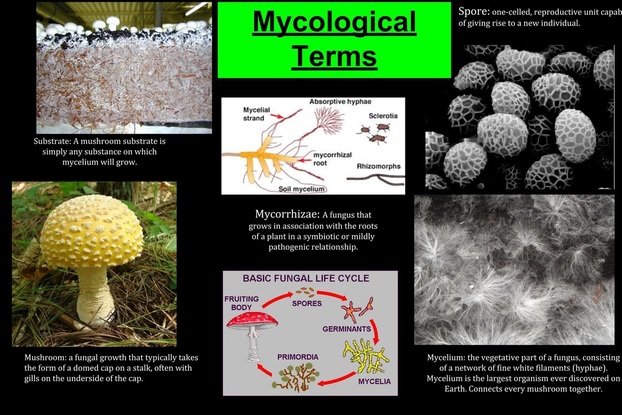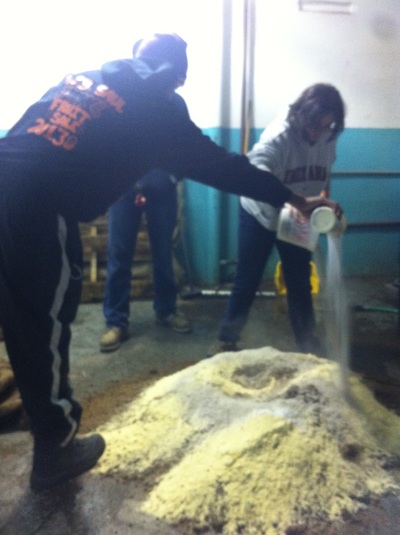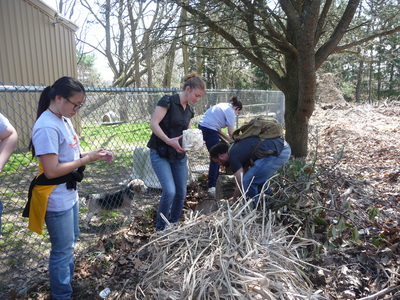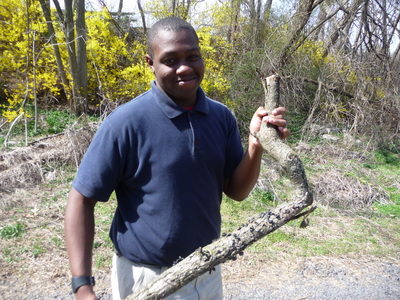|
Valerie Metzler's Inquiry of applied science learning |
Mycelium Study

The environmental science class has a partnership with Tyler Case, a mushroom farmer from Mycopolitan Mushroom Company who comes into our class once a week for 45 minutes to teach about mycology and mushrooms. Guided by Mr. Tyler's instruction, students constructed a "Mushroom House" and cared for the mushrooms by monitoring humidity levels and harvesting the mushrooms every other week or so. Students even had the opportunity to make mushroom quesadillas, which was the highlight (and culmination) of their mushroom growing experience!
After Mr. Tyler had presented various dimensions of mycology, students created informational posters and presented them to another class and hung them in the science wing, promoting the growth and consumption of mushrooms among their peers. The class enjoyed one lesson outside, where they foraged for mushrooms and wild greens with Mr. Tyler and had the opportunity to travel to Mycopolitan Mushroom Company's farm. At the farm, students toured the facilities and gained experience mixing substrate for Lion's Mane Mushrooms and learned to clone mushrooms using sterile technique. |
Above: Student informational poster about mycology.
Left: N. & K. mix growth substrate for Lion's Mane Mushrooms.
Right: S. makes a clone of a mushroom by extracting cells from a mushroom and culturing the cells in a petri dish with agar. |
Two out of nine students said the experience with Mr. Tyler and the mushrooms was not that valuable or wasn’t really a valuable experience since they were not very interested in mushrooms. However, one of these students said, “the whole experience was pretty cool.” This is a slight problem that may be encountered when the whole class is involved with a connected learning experience, since not all students are invested in the subject.
This opportunity gave students the chance to delve more deeply into the science of mushrooms and provided me with a subject and a common experience that I could easily connect to our learning about decomposers, soil, gardening, symbiotic relationships, and cellular respiration. Later in the year, Mr. Tyler gave students a scientific article about mycelial networks that alert plants of aphid attacks on neighboring plants. Students were pretty intimidated by the scientific vocabulary at first, but we broke it down so that each student was reading and summarizing one section and then put it all together to establish an understanding of the content.
Throughout this experience of working with Mr. Tyler, students were involved with the propagation, care, harvest, and preparation of the mushrooms and also gained an understanding of the nutritional benefits of mushrooms and the science of mycelium. In addition, students were encouraged to collaborate with their peers, make connections with the environmental science content, sharpen their science practice skills, and explore connections between mycelium and their lives.
This opportunity gave students the chance to delve more deeply into the science of mushrooms and provided me with a subject and a common experience that I could easily connect to our learning about decomposers, soil, gardening, symbiotic relationships, and cellular respiration. Later in the year, Mr. Tyler gave students a scientific article about mycelial networks that alert plants of aphid attacks on neighboring plants. Students were pretty intimidated by the scientific vocabulary at first, but we broke it down so that each student was reading and summarizing one section and then put it all together to establish an understanding of the content.
Throughout this experience of working with Mr. Tyler, students were involved with the propagation, care, harvest, and preparation of the mushrooms and also gained an understanding of the nutritional benefits of mushrooms and the science of mycelium. In addition, students were encouraged to collaborate with their peers, make connections with the environmental science content, sharpen their science practice skills, and explore connections between mycelium and their lives.
In the images above, students distribute substrate blocks outside the school and mulch the blocks with leaves to retain moisture. In a week, students were able to harvest the mushrooms that had grown from the growth kits. The image below shows a student poster.










